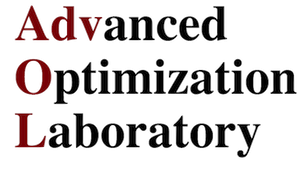| Speaker: | Monica Cojocaru |
| Department of Mathematics & Statistics | |
| University of Guelph |
Title: Objective and subjective decision factors: Modelling consumer behavior from individual to population scale
Modelling human decision processes and their impact on everyday life is today at the forefront of applied and social sciences. The need to understand, quantify and forecast how individuals and/or populations behave with respect to their surroundings has never been greater, in particular in the face of growing environmental challenges.
The process of decision making at the individual level has been studied extensively in operations research and management sciences, optimization, game theory, economics etc. The traditional approach is concerned primarily with the study of appropriately defined static (equilibrium) states and their properties, assuming that individuals make rational decisions. For constantly evolving systems however, this is an important, yet not sufficient, approach to describe societal behavior. This is a particularly important question if one studies innovation (new products) and science (new information about a product e.g. health benefits) driven problems, their complex relationship with policy making, and the ever changing population composition. In such a setting, the factors influencing individual and/or population attitudes are evolving, so the static theory cannot apply.
My research is centered around several dynamic modelling approaches to population behaviour incorporating both objective and subjective decision factors. In this talk I concentrate on two time-dependent extensions of a standard, static model of consumer choice for differentiated products. We use both an agent-based and a PDE computational approach, and we incorporate social network effects. In this setting, an individual's choice depends not only on its characteristics (personality traits, perceived health benefits of a product, price of product, personal income), but also on the consumption choices of others in its social network. Of central interest is how consumers react (be it objectively and/or subjectively) to the introduction of a new product in the market. We are able to simulate socio-economic decision making criteria, under time-dependent individual and product characteristics, and to compute the adoption level of the new product in the population.


